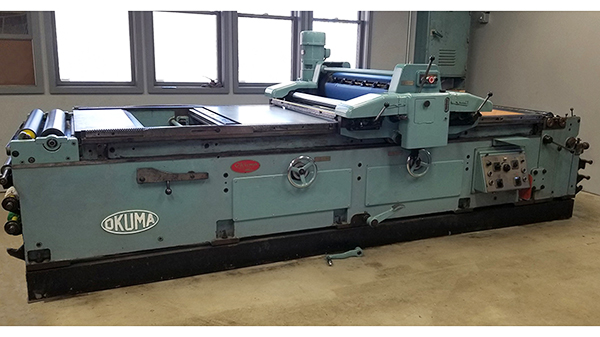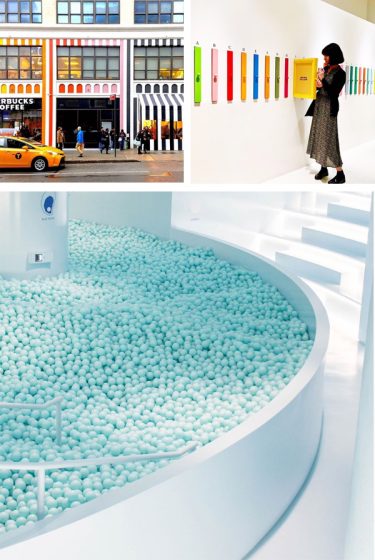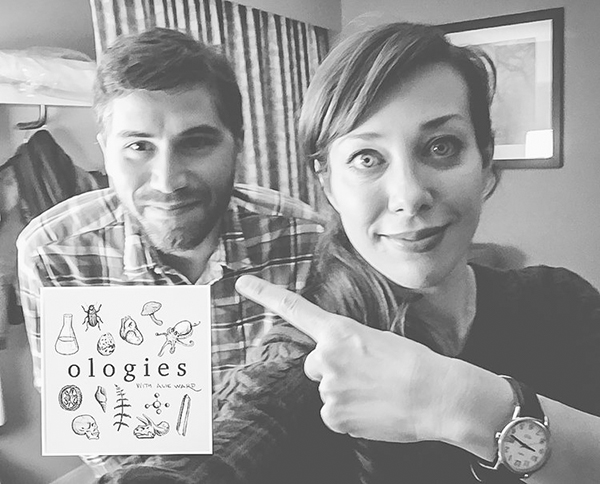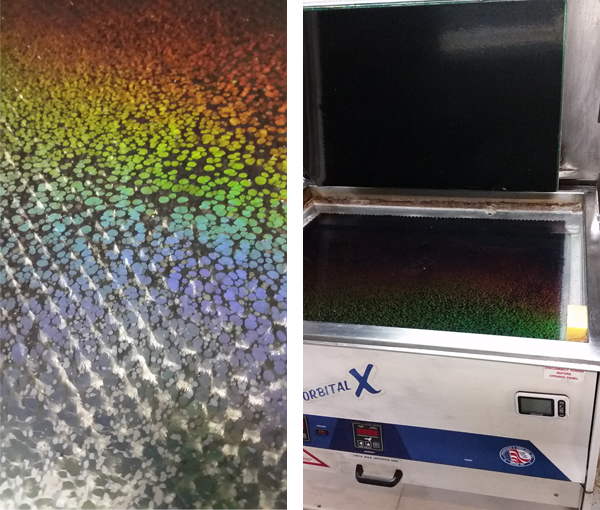We’re still very much the same questioning, searching, and inquisitive bunch of folks and this month’s installment is a good testament to this. We enjoy the wonderful, creative, and just plain cool things that catch our eye day in and day out. In this latest installment that made us oooh and ahhhh, we bring you a cool kickstarter giving new life to an Okuma litho proof press, a hue-tastic interactive color exhibit, beautiful traditional bookbinding and much more!
From Maddie:
Lithosphere: The Story of Big Dreams and A Big Press
Shelley Thornstensen of the Printmakers Open Forum has successfully completed a kickstarter that involves moving & setting up a big, beautiful Okuma flatbed lithography offset proof press. Thornstensen envisions a new life for large scale equipment for her print shop in Oxford, Pennsylvania. This press, 13.5 feet long and over 10,000 pounds is a versatile piece of equipment that will print woodblocks, litho plates, or litho stones. She has unique techniques to use on this press and looks forward to sharing this knowledge with other printmakers (please check out her summer print camp!).

In completing her financing campaign to move and perform maintenance on the press, she has found a wonderful amount of support and a lot of encouragement from the printmaking, as well as an online community. Thornstensen returns the favor with many rewards for participating in the fundraiser. These include stickers, totes, fine arts prints, and t-shirts with a bear design designed by Andrew Mullaly (fun fact: Okuma means “bear” in Japanese!).
Check out her social media page ( Facebook, Instagram, Tumbler ) to see the latest developments on this cool project and see the new press for yourself. Leave her a comment just to say “hey” and to remind her how awesome she is!
From Rebecca:
Hue Oughta Know: The Color Factory Exhibit in NYC
Grab your Pantone swatch book, camera, and sense of playful wonder for The Color Factory exhibit in the SoHo area in NYC!

The enchanting all-ages interactive exhibit features brilliantly colored rooms to dazzle the senses — from a light blue ball pit room, a history & origin of colors room (so cool!), custom-colored macarons in their gift shop, and more.

Originally based & started in 2017 in San Francisco, the exhibit’s popularity soon blossomed into the NYC and a Houston installment exhibit. Currently, the pop-up experience exhibit is going from now until April 2020.
Grab tickets NYC here (https://colorfactory.co/tickets)! The Color factory is located at 251 Spring Street, New York, NY 10013.
New Archeology Find in Upstate New York: The World’s Oldest Forest
Upstate New York is full of hidden science-y good gems: The Museum of Science & Technology, Herkimer Diamond mines, and the awesome Corning Museum of Glass. Recently, scientists and researchers in Cairo, New York have added another one: evidence of perhaps the world’s oldest forest.

A tree root system that is 385 million years old was discovered in the Catskills region in the fossil soils near Cairo, New York (about a 3-hour-ish car drive from us here at Boxcar Press). The findings show potential forests and flora evolved during the Devonian age (the age of fish as well as early forms of sharks, spiders, and insects).
For reference, the Tyrannosaurus rex was living between 68-66 million years ago. Woah!
From Cathy:
I enjoy all videos that show letterpress printing, printmaking and book arts. This one appeals to me because it’s serene and zen-like. It is pleasing to the eye with the colorful paper and the tools and watching her work. Her voice and hands just soothe. I hope it pleases you.

Photo and video courtesy of BBC.com
We hope you explore some of our links and perhaps learn a little bit more about what interests us here at Boxcar Press. Email us at info@boxcarpress.com the things that delight you also!



















 (photography courtesy of TOGETHER/Pahzit Cahlon)
(photography courtesy of TOGETHER/Pahzit Cahlon) (photography credit: NASA/JPL-Caltech)
(photography credit: NASA/JPL-Caltech)

 (Photography credit:
(Photography credit: 